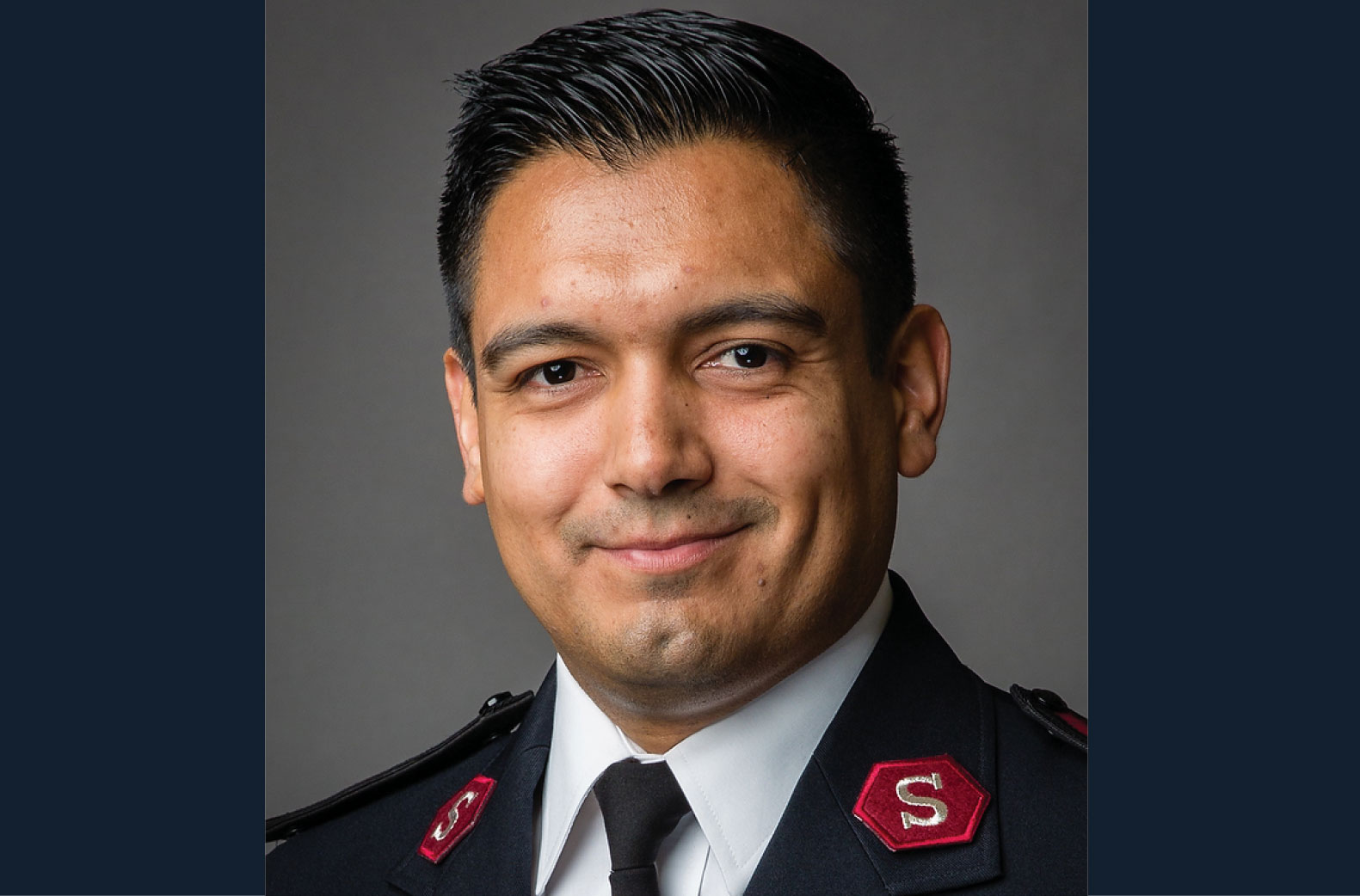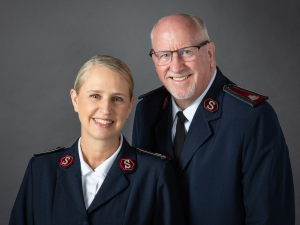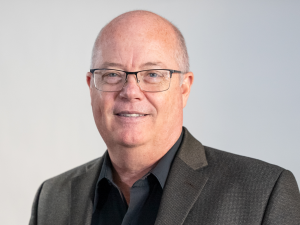We’re kicking off our state of the issues series today with the state of hunger.
According to the USDA, more than 34 million people, including 9 million children, today in the United States are food insecure.
34 million people. To put that in perspective, that’s more people than the entire population of 186 countries.
Hunger can and does affect people from all walks of life. Millions of people in the U.S. are living paycheck to paycheck. They’re one medical emergency or missed paycheck away from going to bed hungry.
The COVID-19 pandemic caused a spike in food insecurity that still hasn’t returned to pre-pandemic levels. Many experts don’t think it ever will. Families with children and communities of color were particularly hard-hit.
What’s more is, many households that experience food insecurity don’t qualify for federal nutrition programs, such as the Supplemental Nutrition Assistance Program, or SNAP, and have to visit their local food banks and other food programs to help fill in the gaps.
Needless to say, there’s a lot of work to be done to decrease the number of food insecure households across the country. In this series to come, we’ll be discussing hunger and food insecurity, and some examples of The Salvation Army’s work to address this issue. The Salvation Army runs a wide array of programs in this arena, all tailored to meet the unique needs of the communities we serve.
For instance, in Chico, California, The Salvation Army offers cooking classes to local kids to teach them how to prepare nutritious meals and adopt healthy habits.
In Mesa, Arizona, The Salvation Army partners with United Food Bank for the Grocery Food Rescue Program, which redirects fresh food from the landfill to households in need. And you’ll hear from a driver who helps to make those rescues in this series.
In many communities, The Salvation Army runs client-choice food pantries, a twist on the traditional food bank models that allows families to shop for their food like they would in a grocery store.
It all depends on the needs of the community.
Across the country, The Salvation Army operates more than 1,500 food pantries, and annually serves more than 171 million meals, which includes prepared meals and some 6.4 million food boxes that contain 20 meals each.
To help set the table for this series on hunger and food insecurity, we’re talking today with Captain Angel Amézquita, the Corps Officer and director of the Los Angeles Central Corps and Red Shield Community Center, located in the heart of LA’s Pico-Union neighborhood.
Show highlights include:
- What ministry looks like at The Salvation Army Los Angeles Central Corps and Red Shield Community Center.
- What the surrounding community is like.
- What encouraged Captain Angel Amézquita to become a Salvation Army officer.
- What needs he sees at The Salvation Army Los Angeles Central Corps and Red Shield Community Center.
- What impact hunger has in the community.
- Insight on a Salvation Army program that Amézquita sees benefiting his community.
- What The Salvation Army is doing to fight against hunger on a broad scale.
- How Amézquita’s experience with food-insecure families has impacted him.
- A word for those listening who are unsure of where the next meal will come from.
- How you can get involved with The Salvation Army’s work to fight food insecurity across the U.S.
Listen and subscribe to the Do Gooders Podcast now. Below is a transcript of the episode, edited for readability. For more information on the people and ideas in the episode, see the links at the bottom of this post.
* * *
Christin: Well, Captain, welcome to the Do Gooders podcast. Thank you so much for joining me today.
Captain Angel Amezquita: Well, thank you for the invitation. I’m happy to be here.
Christin: You direct The Salvation Army’s efforts at the Los Angeles Central Corps and its neighboring Red Shield Community Center. Can you share more about your ministry there and what it entails?
Captain Angel Amezquita: Well, my wife and I got appointed to oversee the typical corps programming at the beginning, such as Bible studies, discipleship groups, worship groups, troops, you know, the typical preaching and kettles. But we also have the family center, which offers food boxes, meals, holiday dinners, hygiene kits and snacks, counseling, and in some cases, financial assistance. But the fun part starts when you implement the Red Shield. The Red Shield is our community center that has a library, computer lab, tutoring, gym, pool, soccer field, karate, dance, music, basketball court, it’s just a huge operation.
Christin: How many families do you see come through the Red Shield?
Captain Angel Amezquita: Our membership is running at about 1,500 memberships. And it’s a mixture of kids, seniors, young adults, all ages, and I can probably say all cultures.
Christin: Now that’s a lot of people, but it sounds like a fun place to be. I know I’ve been there a couple of times and it’s pretty vibrant. There’s a lot going on.
Captain Angel Amezquita: Yes.
Christin: What’s the surrounding community like?
Captain Angel Amezquita: In my perspective, it is a very interesting community. Our center is in the center, basically located in the heart of Pico-Union District. I was doing a little bit of research, but they say 23.3 percent is the crime rate. And the approximate population is 40,000 people. But if you drive just a few minutes down, you can visit USC, Koreatown, we’re minutes away from Skid Row. We’re walking distance from Crypto.com arena and a few retirement homes. So, like I said, our center’s open from nine to nine, Monday through Friday and Saturday and Sundays, but we see, we can experience a mix of cultures, generations coming through our doors every day.
Christin: What made you want to become a Salvation Army officer or pastor? When did you know that this was what you wanted to do with your life?
Captain Angel Amezquita: It’s a really funny story, at least for me. I was introduced to The Salvation Army as an advisory council member. And I was in charge of the public relations chair. So, my job was to really connect people to the community, with the community, and see how they can help us expand our programming in our facility. So throughout the time I was serving at the Gilroy Corps, I seen programs such as the feeding program for homeless, the shower program. We started the fresh produce program. We even did the first kettle kickoff for our corps. And before I left, we were able to put in new concrete, install a freezer, and even an outside pizza oven.
So honestly, I had a lot of fun being at that corps. And I remember telling the officer at this time, and he wasn’t my pastor at the moment, I said, you know what? I really would want to do what you do. I really want to see, you know, oversee a facility just like this one. And he’s like, well, you first need to become a soldier and you start coming to our corps. At that moment, you know, I was dating the love of my life, who also received her calling to officership before marriage. I knew that was the confirmation from the Lord that this was the path he was marking for us. It wasn’t easy. But here I am and here we are serving the Lord in the capacity He allows us to. And I guess I just fell in love with how God is using The Salvation Army to change lives.
Christin: And now you’re a big part of that, which is fun. So you mentioned it a little bit, but a Salvation Army officer, for anybody who’s not familiar, wears many hats, largely because the Salvation Army is flexible in how it meets whatever the specific needs are of a particular community. So when it comes to your congregation and community, what are the needs that you see most often?
Captain Angel Amezquita: It is a challenge to think about it because when I was thinking about all the hats we wear as officers, it made me think, well, my wife and I started as soldiers and that comes with responsibilities. Then we became employees together, then we became cadets and officers at the same time. And we have been exposed to so many different units, programs, services, and communities all around the Western Territory. But when we came across, on stage, I just remember walking across the stage going towards the Commissioner. And we were thinking, man, we’re going to be assistant corps officers. And if we’re really lucky, we’re going to be corps officers. But when the Commissioner said, you’re ministry leaders of the L.A. Red Shield Community Center, we smiled because that’s what we’re trained to do. But in our mind, I was like, what in the world is that?
After we got off stage, I was like, do you know what that is? It’s like, no, I never heard ministry leaders entitled to anybody. So we were so confused. But after becoming corps officers at LA Central and then merging the LA Red Shield together and being exposed to the role of executive directors and corps officers, I’ve never in my mind could have imagined how many hats you would wear because one minute you’re, you know, you’re teaching music to kids or you know, you’re hosting a Bible study the next minute, you’re, bagging food or lunches. And then the next minute you’re serving a hot meal to the youth. Some days you’re distributing 300 boxes of fresh produce and pantry items to the seniors. But then, you’re in Skid Row giving hot meals, or pizzas, it’s just so many hats that it could be overwhelming. But, when you see these faces of people smiling back and really generally giving you that thank you for being here and you listening to their story, it just makes it all worthwhile.
Christin: I bet you get to see a lot of those smiles at the Red Shield, which is fun. So we covered all the hats you wear. What are some of the biggest needs that you see in your community?
Captain Angel Amezquita: I think, overall, people are looking for a place where they can feel accepted. They feel that, you know, you’re serving them genuinely because they’re in a spot where they’re already hurting. It’s a spot where they’re already feeling vulnerable. And it’s not like a transaction. Let me give you this hot meal. You know, they want to be seen. They want to be noticed as individuals. And with the resources, I feel that the transaction of giving them a bag of food or a meal is just an opportunity to let them know that they’re loved. So the need, I think, is just acceptance and at the same time to provide in a time of vulnerability and insecurity.
Christin: You talked about giving those meals, those bags of foods, getting more into that. We know that more than 34 million people in the U.S. are food insecure right now, and that hunger does and can affect people from all walks of life. What impact have you seen hunger have in your specific community?
Captain Angel Amezquita: Well, like you said, I believe that communities are suffering on some level due to the massive layoffs during COVID. Many communities, especially ours, have not recovered from that. Many are still in huge, large amounts of debt. They owe thousands in back rent. They are forced to decide between buying their family school supplies, Christmas gifts, clothing, and then on top of it, food. It’s overwhelming. And now after the increase of cost of living, hunger has definitely impacted our senior community, our family adults, our children, sometimes we have donors that give us food for family pets. And just giving them that bag of cat food or dog food just fills them up with so much joy. I think it’s the whole family and it’s wholeness.
Christin: From the different vantage points that you’ve had in The Salvation Army, can you give us an example of a program or an initiative that you’ve seen make a real impact in the area of food insecurity and meeting that need?
Captain Angel Amezquita: If I had to choose one, I would describe a mental picture I have in my head. And it’s of this lady and, and you know, we do senior food distributions every Friday in the morning and we give fresh produce and we get pantry items and frozen meats. But there’s this lady sitting in a milk crate and you look at her and she just fills up with a smile. You know, she’s tired because she’s wearing a knee brace. You know, she’s using a walker. She’s a senior citizen. She’s at the front just resting because that’s the only place we have for a shade. And the line is about 350 feet long.
These seniors line up at 5:30 in the morning and we don’t even do distribution till 9 a.m. But this lady is just like, she needs to make sure she gets this box because she’s living on fixed income. She might not afford the next frozen one pound of meat due to expense. But here she is smiling and you can see the joy in her face as she looked at us and she’s just like, God bless you. You know, I see her every Friday, but it seems like it’s the first time every Friday. She’s like, you know, happy to see us. And she’s always thanking us. And I feel that in her expression, it’s just with her, the joy in her eyes, she knows she’s being cared for. We’re trying our best to provide the essentials and one less thing for her to worry about. That always catches me. Even if I’m tired, I can’t wake up, I feel like that mental picture.
Christin: Something to look forward to on Friday mornings. So we know that hunger affects all communities, though not all communities equally, of course. What can you tell us about The Salvation Army’s fight against hunger more broadly?
Captain Angel Amezquita: You know, I was sitting in one of the seminars just recently just talking about this topic and they were saying that there’s this estimate of 4.2 million youth and young adults experiencing homelessness in the United States each year. That for me, that was an impact. And then it said, if one out of 10 young adults ages from 18 to 25, and one out of 30 youth of 13 to 17 may be experiencing homelessness around us and we might not even know about it, right? They’re just visiting our centers, visiting our units, and we will not know that they’re suffering from homelessness.
But in The Salvation Army across the country, it’s providing housing, shelters, centers, and making these people feel welcome and it’s a safe place for them to learn and just be youth, you know, being kids. Find community with others, finding dignity, respect. Some of them, like I know, we’re so close to the Hollywood Corps, they offer a shelter for them to find recovery and reconciliation and make new friendships. And I think the Salvation Army is just out there using food as a place to have them feel secure, but at the same place creating this environment where they can grow, prosper and know that they’re loved. I think that’s even more important.
Christin: Yeah, I love, like you said, it’s an opportunity to show that somebody cares. I mean, it might be just a box of food, but there’s a lot more behind it. Along those lines, how has your experience working with food insecure families, the people who come to get these boxes and these distributions, how has that impacted you?
Captain Angel Amezquita: Not a long time ago, I think it was a few Saturdays back, a single mother and a daughter came through our doors and they were looking for food, right? They were looking for shelter. And she explained to us that her biggest fear was exposing her daughter to all the violence, the substance abuse, the disease that, you know, is in the streets here in Skid Row and, you know, the people that are experiencing homelessness. But while we were just talking, I took a quick glance at her vehicle and she had food wrappers, she had clothing, she had snacks around, and then she had a few bags full of stuff I wasn’t able to tell. But you can see this lady was living off her vehicle with her daughter. And she was just telling me her story, you know, she was in need and she was afraid of just exposing her daughter, I don’t know how much I can talk about this, but to the reality of homelessness. She was just basically expressing her concern. And how this impacted me was I was, after helping her getting a hotel and getting her some food to eat and comforting her and my wife obviously was present and we really took the time to pray for her and really find a way to show her that, you know, we’re going to help her till we find a shelter or housing arrangement for her. But, it struck a a chord in me because we often take little things for granted.
Like even a place for us to rest, lay our heads to sleep, eat something special, drink a cold lemonade on a hot day, have a space where we can read a book. You know, this is a child that was… I remember looking at the little girl and I’m like, she maybe was scared, maybe she was confused, wondering why she was living off her vehicle. Why was she now eating junk food instead of hot meals? That wakes you up.
Christin: Yeah, absolutely. What would you say to someone who maybe isn’t sure where their next meal will come from?
Captain Angel Amezquita: That they’re not alone. The Salvation Army is here to help. Just look for the [Salvation Army] red shield around in your community. They’re filled with people that care. They are there to serve the community and they’ll find a way. And if they don’t, they’ll find someone that can.
Christin: What’s one of the simplest ways people can get involved with The Salvation Army’s work in this arena and fighting food insecurity or in other ways, wherever they might be?
Captain Angel Amezquita: Well, to secure that, you know, we are dedicated to Doing the Most Good through the United States. But we couldn’t offer all of these programs and services without support. So if there’s someone out there that has the heart to serve in any capacity, to serve our vulnerable members of our community, of their community, they’re able to donate their time or financial gifts to the local Salvation Army, either online or in person.
Christin: Maybe even join an advisory board and see your life changed forever. You never know.
Captain Angel Amezquita: Yes, we’re looking for qualified people that have a passion.
Christin: That’s right. Well, Captain, thank you so much for sharing. Thank you for telling us about your community and about the work that you’re doing and everything that’s going on. We appreciate it.
Captain Angel Amezquita: Thank you again for the invite and I hope to see you guys soon. You’re welcome to join our center, L.A. Red Shield and the L.A. Central Community.
Christin: Where can we find you online to see more about The L.A. Red Shield?
Captain Angel Amezquita: You can find us at laredshield.org.
Christin: Perfect. Thank you, Captain.
Captain Angel Amezquita: Thanks so much.
Additional resources:
- See how The Salvation Army fights hunger.
- It’s because of people like you The Salvation Army can serve more than 24 million Americans in need each year. Your gift helps fight for good all year in your community. It’s an effort to build well-being for all of us, so together we rise—and that good starts with you. Give to spread hope with a donation of funds, goods or time today.
- How do you want to experience your life? What do you want your life to reflect? Get the Joy-Filled Toolkit now and make a plan for joy with a printable 12-week joy planner and mini-workshop podcast to help you create a season of intention.
Listen and subscribe to the Do Gooders Podcast now.












